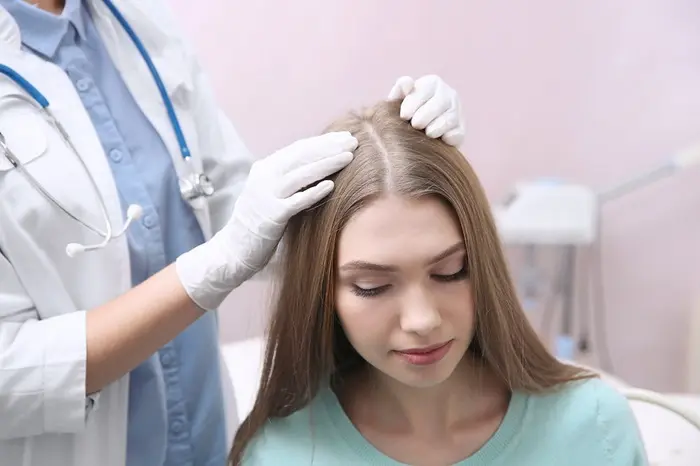Hair transplantation has become an increasingly popular solution for those struggling with hair loss. With advances in medical technology, the results of hair transplants have become more natural and long-lasting. However, understanding what to expect in the long term is crucial for anyone considering this procedure. This article will explore seven things that typically happen ten years after a hair transplant, providing a comprehensive and objective overview of the long-term outcomes.
1. Permanent Hair Growth
Transplanted Hair Longevity
One of the most significant benefits of hair transplantation is the permanence of the transplanted hair. Ten years post-surgery, the hair transplanted from the donor area (usually the back of the scalp) continues to grow naturally. This is because the transplanted hair retains the genetic characteristics of the donor area, which is typically resistant to balding.
Maintenance of Results
Patients can expect to maintain their hair density and overall appearance achieved shortly after the transplant. Regular hair care and a healthy lifestyle will support the longevity and health of the transplanted hair.
2. Changes in Native Hair
Ongoing Hair Loss
While the transplanted hair remains unaffected by the balding process, the native hair that was not transplanted can still thin over time. This ongoing hair loss can affect the overall appearance and density, potentially leading to a need for additional treatments or procedures to maintain the desired look.
Secondary Procedures
Some patients may opt for a second hair transplant to address new areas of thinning or to increase the density of the original transplant. This is especially common if the initial hair loss progresses significantly over the decade following the first procedure.
See Also: 10 Things To Note After Hair Transplantation
3. Natural Aging Effects
Hair Graying
Ten years post-transplant, the natural aging process will affect both the transplanted and native hair. Hair graying is a common aspect of aging, and transplanted hair will gray just like the rest of your hair. The rate and extent of graying will depend on genetic factors and cannot be prevented by the transplant procedure.
Changes in Hair Texture
Aging can also affect hair texture, making it finer, coarser, or more brittle. These changes will be consistent across both transplanted and non-transplanted hair, requiring adjustments in hair care routines to maintain a healthy appearance.
4. Scar Healing and Visibility
FUE and FUT Scars
The type of hair transplant technique used (FUE or FUT) will influence the nature and visibility of scars. With FUE (Follicular Unit Extraction), tiny dot scars are spread across the donor area, whereas FUT (Follicular Unit Transplantation) leaves a linear scar. Over ten years, these scars generally heal well and become less noticeable, but their visibility can vary based on individual healing responses and hair length.
Scar Maintenance
For FUT patients, maintaining a longer hair length in the donor area can help conceal the linear scar. Regular scalp massages and treatments can also improve scar tissue flexibility and appearance.
5. Psychological Impact
Boosted Confidence
One of the most profound long-term effects of hair transplantation is the boost in self-esteem and confidence. Many patients report sustained improvements in their self-image and social interactions, which can positively impact their overall quality of life.
Psychological Adaptation
Adapting to a new appearance can take time, but ten years after a successful hair transplant, most individuals have fully adjusted and integrated their new look into their identity. This long-term acceptance can reinforce the positive psychological benefits of the procedure.
6. Health of the Scalp
Scalp Health Maintenance
Maintaining a healthy scalp is crucial for the longevity of the hair transplant results. Over ten years, regular scalp care, including proper hygiene, avoiding harsh chemicals, and possibly using medicated shampoos or treatments recommended by a dermatologist, will ensure the scalp remains in optimal condition.
Potential Scalp Conditions
Certain scalp conditions, such as dandruff, psoriasis, or seborrheic dermatitis, can arise or persist over time. Addressing these conditions promptly with appropriate treatments will prevent them from affecting the health of both transplanted and native hair.
7. Medical Follow-Up
Regular Check-Ups
Regular follow-up appointments with a hair restoration specialist or dermatologist can help monitor the health of the transplanted hair and scalp. These check-ups allow for early detection and management of any issues that may arise over the years.
Technological Advances
Advancements in hair restoration technology and techniques continue to evolve. Ten years after a transplant, patients may benefit from newer treatments and innovations that can enhance or maintain their results. Staying informed about these developments and consulting with a specialist can provide access to the latest options in hair care and restoration.
Conclusion
Ten years after a hair transplant, patients can expect to see permanent hair growth, natural aging effects, and possible changes in native hair. The psychological benefits of increased confidence and self-esteem are significant, and maintaining scalp health is crucial for long-term success. Regular medical follow-ups and awareness of new advancements in hair restoration technology can further support the longevity and appearance of the transplanted hair. Understanding these long-term outcomes helps set realistic expectations and prepares individuals for a successful hair restoration journey.
Related topics:

